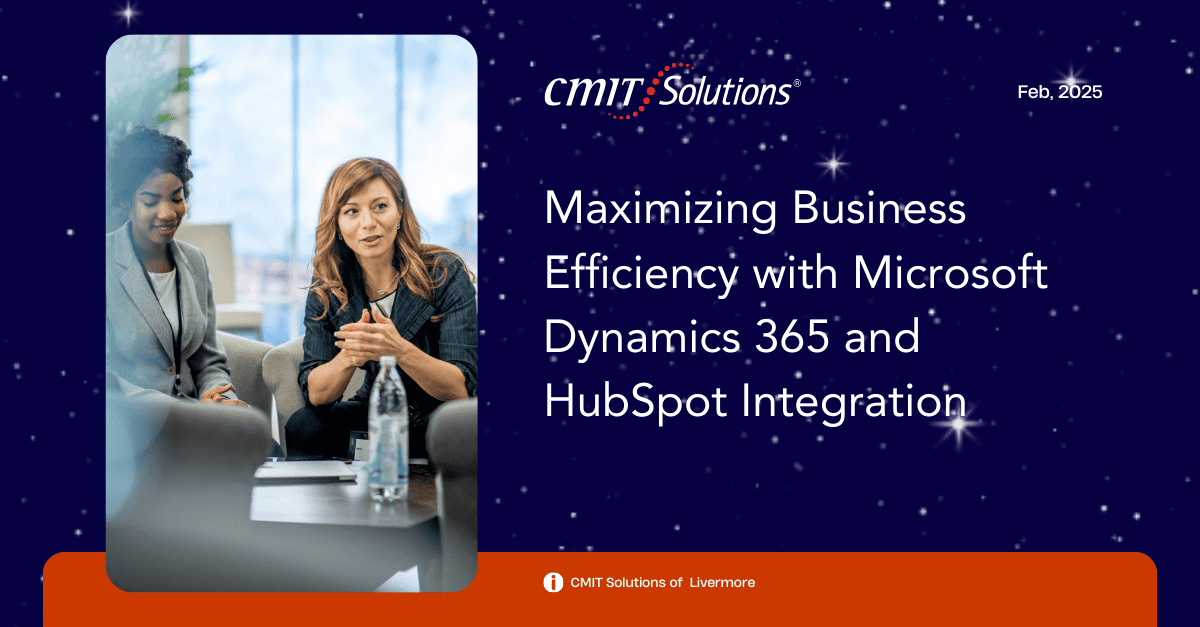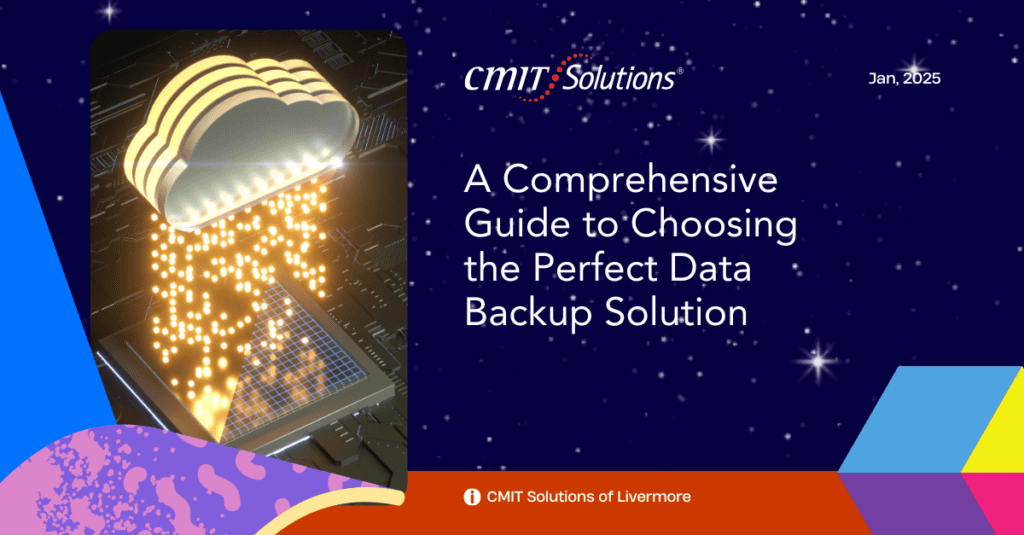In today’s competitive business environment, seamless collaboration between departments is crucial for driving growth and maximizing efficiency. Integrating Microsoft Dynamics 365, a powerful customer relationship management (CRM) platform, with HubSpot, a leading marketing automation tool, can transform the way your business operates. At CMIT Solutions of Livermore, we help businesses unlock the full potential of these tools through expert IT services and integration strategies.
This blog explores the benefits of integrating Microsoft Dynamics 365 and HubSpot, the key challenges, and actionable steps to ensure a successful implementation.
Why Integrate Microsoft Dynamics 365 and HubSpot?
Both Microsoft Dynamics 365 and HubSpot are industry-leading platforms designed to streamline business processes. While Dynamics 365 excels in managing customer relationships and sales pipelines, HubSpot empowers businesses with robust marketing automation and lead nurturing tools. By integrating these platforms, businesses can achieve:
- Unified Data Management: Synchronize customer data across marketing and sales teams to ensure consistency and eliminate silos.
- Enhanced Collaboration: Enable real-time communication between marketing and sales, ensuring both teams are aligned on goals and strategies.
- Improved Lead Tracking: Track leads seamlessly from initial contact to conversion, providing valuable insights into customer behavior.
- Increased Efficiency: Automate repetitive tasks, reducing manual effort and freeing up time for strategic initiatives.
Discover how productivity applications can enhance your workflow.
Key Features of Microsoft Dynamics 365 and HubSpot Integration
- Bidirectional Data Sync:
- Automatically sync contacts, companies, and deals between HubSpot and Dynamics 365.
- Ensure that changes made in one platform are reflected in the other.
- Enhanced Lead Scoring:
- Combine HubSpot’s advanced lead scoring tools with Dynamics 365’s CRM capabilities to prioritize high-value prospects.
- Streamlined Marketing Campaigns:
- Use HubSpot to create and manage campaigns while leveraging Dynamics 365’s customer insights for targeted marketing efforts.
- Comprehensive Reporting:
- Generate unified reports that provide a holistic view of your marketing and sales performance.
- Automated Workflows:
- Use triggers from either platform to automate workflows, such as follow-up emails or task assignments.
Benefits of Integration
1. Improved Customer Experience
By unifying customer data, businesses can deliver personalized experiences tailored to individual preferences.
- Sales teams can access marketing data to understand customer intent.
- Marketing teams can leverage sales insights to create targeted campaigns.
2. Increased Sales Efficiency
Integration ensures that sales teams have access to up-to-date lead information, enabling them to focus on high-priority opportunities.
3. Better Decision-Making
With comprehensive data at your fingertips, your teams can make informed decisions based on real-time insights.
4. Cost Savings
Reduce costs associated with managing multiple tools and platforms by consolidating operations within an integrated system.
Explore managed services to optimize your IT infrastructure.
Challenges of Integration
While the benefits of integrating Dynamics 365 and HubSpot are clear, businesses may face challenges during the process:
- Data Synchronization Issues
Inconsistent or incomplete data can lead to errors during synchronization. - System Compatibility
Ensuring both platforms are configured correctly is essential for smooth integration. - User Adoption
Employees may be resistant to adopting new workflows or processes. - Security Concerns
Integrating two platforms increases the potential for data breaches if security measures aren’t robust.
Learn how cybersecurity solutions can safeguard your business.
Steps to a Successful Integration
1. Define Your Objectives
Clearly outline what you hope to achieve with the integration, such as improved lead tracking or enhanced reporting.
2. Audit Your Data
Ensure that your data is clean, consistent, and complete before beginning the integration process.
3. Choose the Right Integration Tool
Select a tool or middleware that facilitates seamless synchronization between Dynamics 365 and HubSpot.
4. Test the Integration
Conduct thorough testing to ensure that data flows correctly and all features function as expected.
5. Train Your Team
Provide comprehensive training to ensure employees understand how to use the integrated system effectively.
6. Monitor and Optimize
Regularly review the integration to identify areas for improvement and address any issues.
Discover IT guidance services to streamline your integration process.
Conclusion
Integrating Microsoft Dynamics 365 and HubSpot is a game-changer for businesses looking to maximize efficiency, improve collaboration, and drive growth. By unifying data and automating workflows, this integration empowers your teams to focus on strategic initiatives and deliver exceptional customer experiences.
At CMIT Solutions of Livermore, we specialize in implementing and optimizing IT solutions tailored to your business needs. From cloud services to advanced cybersecurity measures, we ensure your systems are secure, scalable, and efficient.
Contact us today to learn how we can help you integrate Microsoft Dynamics 365 and HubSpot. For more information about our services, visit our homepage.
Unlock the full potential of your business with CMIT Solutions of Livermore as your trusted IT partner.



